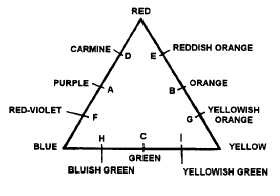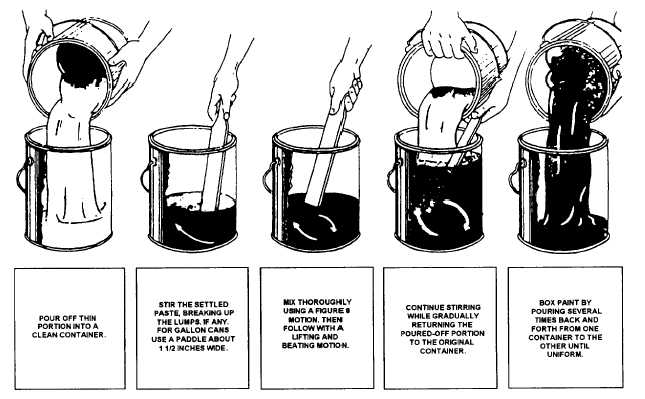eliminated. And, third, the paint must be brought to its
proper application temperature.
MIXING
Paints should be mixed, or blended, in the paint
shop just before they are issued. Mixing procedures
vary among different types of paints. Regardless of the
procedure used, try not to overmix; this introduces too
much air into the mixture. Table 8-3 outlines the types
of equipment and remarks for various coatings.
Mixing is done by either a manual or mechanical
method. The latter is definitely preferred to ensure
maximum uniformity. Manual mixing is less efficient
than mechanical in terms of time, effort, and results.
It should be done only when absolutely necessary and
be limited to containers no larger than 1 gallon.
Nevertheless, it is possible to mix 1-gallon and
5-gallon containers by hand. To do so, first pour half
of the paint vehicle into a clean, empty container. Stir
the paint pigment that has settled to the bottom of the
container into the remaining paint vehicle. Continue
to stir the paint as you return the other half slowly to
its original container. Stir and pour the paint from can
to can. This process of mixing is called boxing paint.
The mixed paint must have a completely blended
appearance with no evidence of varicolored swirls at
the top. Neither should there be lumps of undispersed
solids or foreign matter. Figure 8-1 illustrates the basic
steps for boxing paint.
There are only three primary true-pigmented
colors: red, blue, and yellow. Shades, tints, and hues
are derived by mixing these colors in various
proportions. Figure 8-2 shows a color triangle with
one primary color at each of its points. The lettering
Figure 8-2.—A color triangle.
Figure 8-1.—Manual mixing and boxing.
8-9



